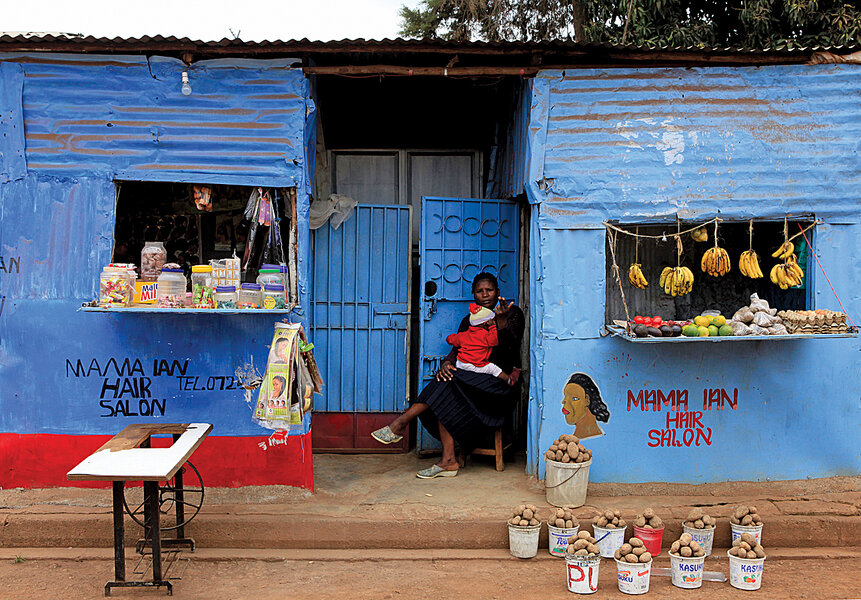Good Reads: From no-strings cash, to a warlord-turned-priest, to a South Pole hike
Loading...
One year ago, National Public Radio’s “Planet Money” reported on GiveDirectly, a group that planned to give money to poor people in Kenya, no strings attached. It drew a lot of skepticism from charity experts. Many worried that the recipients – who received about $1,000 – would squander the cash rather than invest it wisely.
In November, “Planet Money” did a follow-up.
“By and large, people did not waste the money and their lives got better – significantly better,” says NPR’s Jacob Goldstein. Families spent the money on businesses, education, and health care. The number of days their children went hungry dropped by 42 percent. Incomes climbed by 31 percent. Violence declined.
But Kenya is a rather stable country. Would this plan work in more dangerous places?
Columbia University professor Chris Blattman carried out a similar experiment in Liberia, a country recovering from civil war. He gave money to inner-city thieves and drug dealers. While his data are still preliminary, Mr. Blattman found results similar to GiveDirectly’s. People started businesses and stopped committing crimes. However, he says, while the Liberian recipients invested the money, they did not see any meaningful profits.
From vicious warlord to priest
As Liberia works to heal itself, one of its most feared warlords looks for forgiveness. During the war, Joshua Milton Blahyi ruled over the streets of the Liberian capital, Monrovia. He was a cannibal, charged into battle naked with a machete, and – by his own count – was instrumental in the deaths of 20,000 people.
Now, Mr. Blahyi is a priest. “He has built a mission for former child soldiers he finds in the streets, and he gives them food and clothing,” writes Jonathan Stock for Der Spiegel. The story follows Blahyi as he visits the homes of his victims and seeks to convince his former enemies that his new profession is not simply an act.
Machine adds a critical dimension to retail
Wal-Mart dominated bricks-and-mortar retail by building one of the world’s most efficient supply chains. Amazon conquered online retail by using computer analysis to intelligently suggest products based on people’s past purchases. Both companies succeeded by removing barriers between people and products.
But Joshua Klein argues in an article on the website Quartz that this central concept of retail is starting to find a new expression. New 3-D printers – devices that can create any shape out of plastic or other materials – will undercut traditional retailers.
“This shift in the distribution of manufacture means that those giant supply chains Walmart invested so heavily in are suddenly becoming obsolete...,” he writes.
“The result is that the primary value of a physical good increasingly lies in its design, which can now be infinitely represented and reproduced, instantly communicated, semi-automatically assembled ... and shared between friends as easily as pictures of cats.”
The next Wal-Mart could be a nationwide franchise of 3-D print shops. Mr. Klein points to Ponoko, an online catalog of lamps, jewelry, and art. Rather than ship out these products from a warehouse, Ponoko contracts independent manufacturers who have laser cutters and 3-D printers near the customer.
The worst part is not the toughest part
Right now, somewhere in Antarctica, two men are marching toward the South Pole. Pulling 400-pound sleds and facing minus-40-degree-F. conditions, British adventurers Ben Saunders and Tarka L’Herpiniere are attempting the 1,800-mile journey with little more than skis to ease their way.
“In short, a South Pole expedition is pretty much the worst way to spend four months you could possibly imagine, but if you were to ask Ben I don’t think he would say that’s the tough part,” writes fellow thrill seeker Tony Haile in his personal blog. “The tough part is getting to the start line in the first place.”
Mr. Haile writes about the 10 years of failure and determination that culminated in this polar expedition.
Wait! Haven’t I seen that flake before?
As winter sweeps in, elementary school students across the United States will learn that no two snowflakes are alike. Is that really true? Mental Floss magazine asked Kenneth Libbrecht, a physics professor at the California Institute of Technology. [Editor's note: Mental Floss magazine is only available in print.]
While most oxygen atoms have eight neutrons, some come with 10, which, Mr. Libbrecht says, changes the shape of water molecules and affects how they freeze.
“There’s no fundamental law of the universe that says snowflakes can’t be identical,” according to Mental Floss. “But since each flake is made of millions of randomly arrayed water molecules that aren’t quite uniform, the odds of stumbling into twin flakes are astronomically slim.”
Libbrecht estimates that there are more unique shapes for snowflakes than there are atoms in the universe. Good luck finding a copycat.







